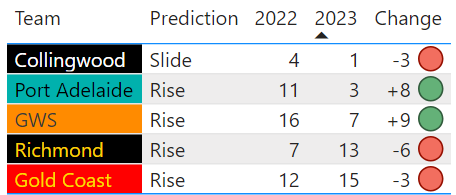Excel review- is it outdated or still in it's glory?
Excel is a tool that the majority of us use or would have come across in our working or academic lives. It has been the cornerstone of data capturing and analysis since the inception of Microsoft back in the 90s. But how has Excel remained such a prominent tool in the digital landscape despite hundreds of new tools and softwares being released over the past 20 years?
In this article we’ll be discussing the greatness that is the power of Excel, but also where it might not be ideal for use in informing your next marketing, operations or general business strategy.
Contributors: Louis Keating (Principal Consultant and Owner), Mohamed Shakir (Senior Data Scientist, Jack Sloman (Marketing Manager and Junior Data Analyst).
Excel - A quick run down
As of February 2020, the number of Microsoft Excel company users worldwide were as follows:
Company Excel Users Worldwide
Microsoft Excel is the quintessential spreadsheet app! Functions like INDEX-MATCH let you isolate records from a large range, and powerful filters at the top of each column aid in displaying data in a way that's relevant to you. You can record your own macros or use Visual Basic for Applications (VBA) to vastly speed up your workflow with one-click scripts.
These features are still extremely popular, as indicated in the above graph, particularly in Western countries like the US, UK and Australia. But how much of the office suite technologies market does Microsoft, which will be renamed to Microsoft 365 on April 21, 2020, control?
Office Suite Technology Market Share (%)
As seen, globally, G-suite has a majority position in the market. This trend is similar across most worldwide regions although there are exceptions. In the United States for example, G Suite holds a market share of 56.97% and Office 365 with 42.63%. However, in China the market share is dominated by Office 365 with 57.22% and G Suite has a share of 42.74%.
What are people actually using Excel for?
One of the most interesting facts is that 55% of people don’t use Excel for what it’s intended for! They use it as a text document.
Of the 1.5 billion people that use Excel:
What people actually use Excel for (%)
What’s great about Excel?!
As seen from our figures above, Excel is a quick and simple solution for many people to collect and store information. People’s familiarity with the tool is likely a good explanation for it’s ongoing use, as well as it’s ability to cater for a range of different sorting and analysis needs and, if you’re in the 1%, optimising and solving larger scaled client projects and problems. Despite this, the minute number of users engaging in this more complex usage behaviour suggests a gap for many businesses in terms of the way they use analysis tools to generate insights and strong ongoing strategies.
Some limitations of Excel
1. Size and Scale-ability
We all love being able to jump into Excel and conduct a quick analysis on our latest business numbers and performance. However, for many businesses, the sheer quantity of data that’s available makes this implausible. On top of this, as Excel relies on the users expertise to compute outputs using manually written formulas, one problem can cause a cascading effect on the rest of the numbers. This can lead to numbers which don’t at all reflect the actual insights you are seeking, leading to misinformed decision making.
More advanced tools can easily sense-check your formulas and give you the option to sample outputs, even if there are millions of data points being produced. As a result, small mistakes get weeded out and you can build a robust set of insights from your analysis.
Tools that use code like SQL, allow for the same process to be run multiple times and for others to easily check and validate the code.
Excel is not a relational database, although many companies try to use it as one. Issues creep in rapidly with multiple workbooks and sheets connected via formulas and the “spinning wheel of death” that means a hard reset and then the complications of “do you want to restore this version or delete?”.
2. Not ideal for team collaboration
Planning a marketing strategy is a crucial process, and good communication and collaboration among team members is vital. But real-time collaboration is limited in Excel. The major issue here is that if your team is reliant on a master Excel spreadsheet to generate insights, and different individuals are working on different parts at the same time, updates can become conflicting and therefore, confusing. Despite this, new solutions in Microsoft teams and Cloud-based computing are ironing out associated issues in this area.
However, this dilemma highlights the importance of having dynamic dashboards which automate the upload process to reduce confusion and increase the usefulness of your data. Google Sheets is a nice alternative that allows multiple users to work simultaneously on the same workbook but Sheets is not Excel, even if they look similar. There are many functions that Sheets just can’t compete with Excel on.
3. Manual Data Entry
Your data is more useful when it’s formatted correctly so you can incorporate it in your latest graphs and interactive dashboards. If you’re relying solely on Excel for this cleaning process, it can be a very laborious, time-consuming task. This isn’t saying that Excel isn’t a great tool for doing quick manipulations and graphing of your data, but for a large majority of businesses who generate hundreds, thousands or even millions of data points every day, this process is completely infeasible and trying it won’t deliver any value to you or your customers.
4. Quality Control
One of the most worrying aspects of using Excel is that it’s very easy to insert or paste a new row/column and the formulas you’ve painstakingly set up are now pointing to a different cell...and you haven’t realised! I’ve seen this happen too many times.
The other big issue is when you’ve taken over someone else’s spreadsheet. It becomes a game of detective work, following the formulas to understand how cells are being updated and even worse if you need to comprehend a macro built by someone who’s just used the “record” function.
Are you a marketer?
We help teams of marketers and mid-senior level professionals extract the most value possible from their data. This might involve the use of Excel, or other more advanced tools that best suit the needs of your business and project. Get in touch for a free, no-commitment chat about your business goals and how we can help you achieve them, or if you have any other questions, we’d also love to answer them.
For more fascinating visualisations and data stories, click here.
To keep up with all things data and White Box, follow us on our LinkedIn page.











